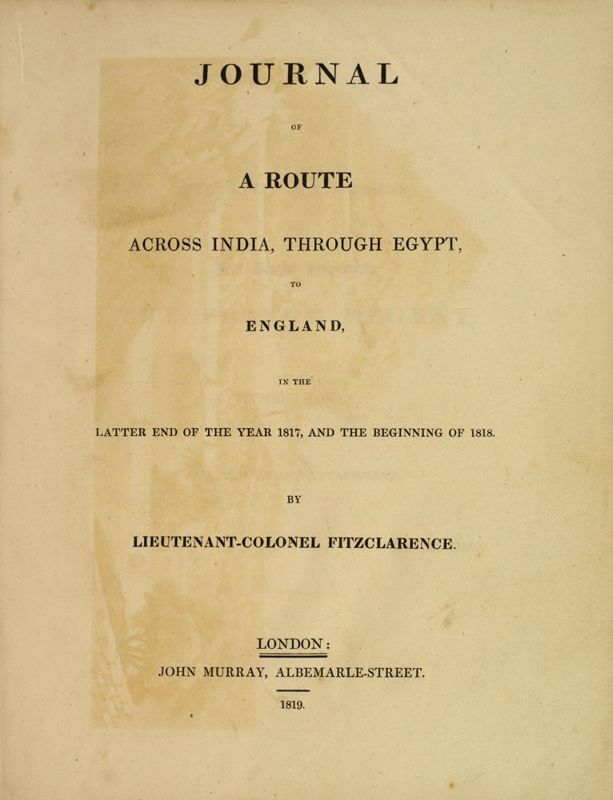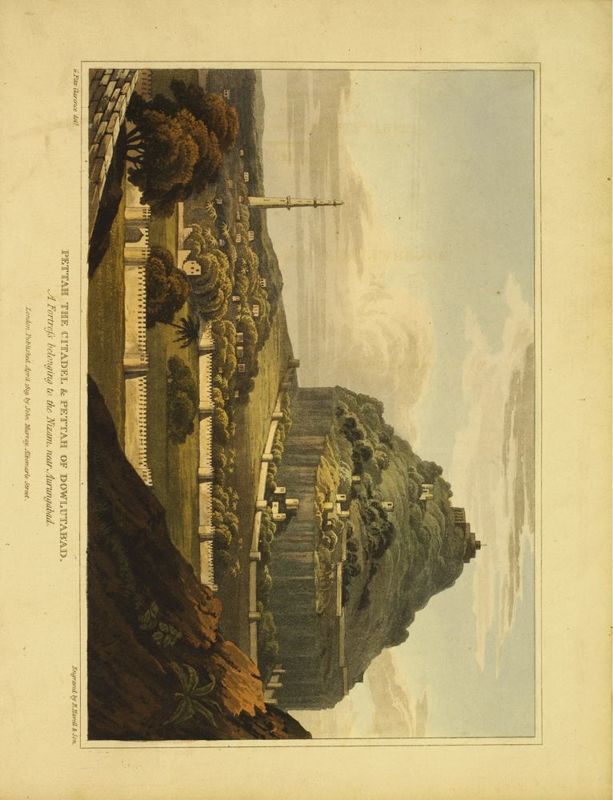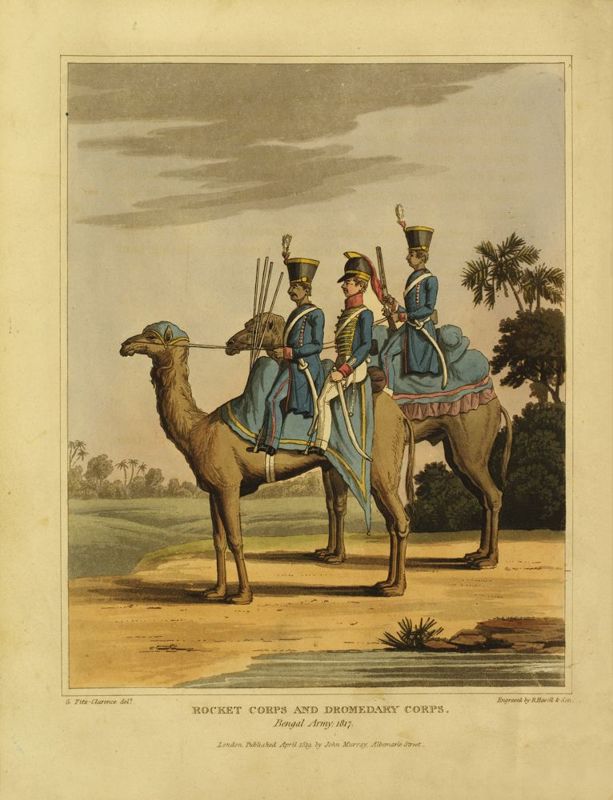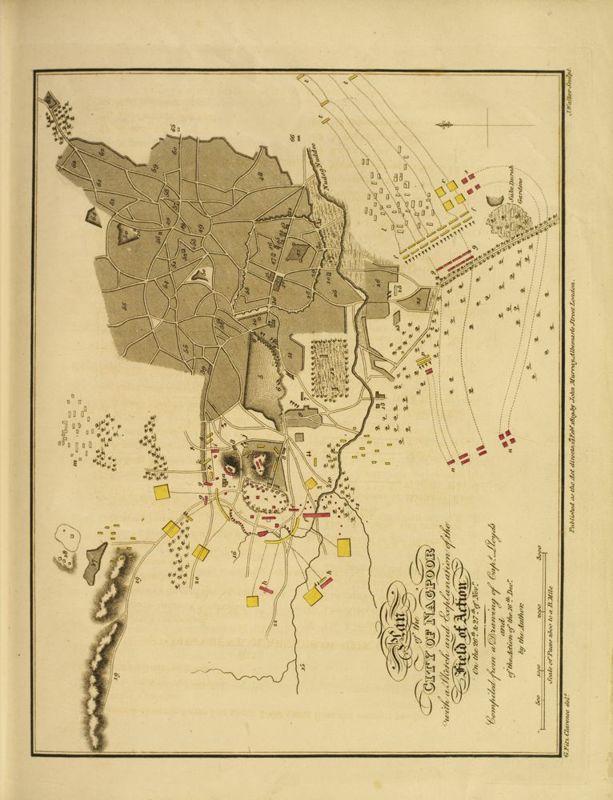If you would like to get in touch, please feel free to contact: email hidden; JavaScript is required
Browse collection
- Full collection
- 18th Century & earlier
- Ackermann
- Africa
- Alken
- Animals
- Arabasia
- Architecture/Mansions
- Art
- Australasia
- Botany
- British Isles
- Caricatures
- Children
- China
- Chromo added colour
- Chromolithographs
- Conchology
- Costume
- Cruikshank
- Culture/Lifestyle
- Dutch
- East European
- Far East
- France
- Furniture/Antiques
- General
- Germany
- Grandville
- Heraldry
- History
- History - England
- History - Europe
- Holy Land
- India
- India - sepia
- Islam
- Italy
- Japan
- Literature
- London
- Manuscript
- Map
- Military
- Monnier
- Natural history
- Pastimes
- Pochoir
- Polar regions
- Portraits
- Religious/Christian
- Religious/other
- Rowlandson
- Russia
- Science
- Scrapbook
- Sepia
- South America
- Sports/Hunting
- Stamps
- Swiss
- The Americas
- Theatre
- Travel/Scenery
- Watercolours
- World
FITZCLARENCE, Lieutenant-Colonel George Augustus Frederick.
Journal Of a Route Across India Through Egypt To England In The Latter End Of The Year 1817 And The Beginning Of 1818.
George Fitzclarence (1794-1842), was president of the Royal Asiatic Society and was engaged in the campaigns against the Mahrattas of 1816 and 1817. In this work, he discusses various proposals on the best route between India and England and writes about his remarks on the trade between Persia, Arabia, and India. In February 1818, Fitzclarence returned to England and he explains in this work his observations of Muslim worship, the recruitment of Arabs and Abyssinians in the British army, building vessels for the Imam of Muscat, and his impression of the Island of Socotra, Bab el-Mandeb, the Imam of Muscat, and the best way to fight the Wahhabi Pirates? Fitzclarence, crossed the Egyptian desert, explored the pyramids with Salt And Belzoni, descended the Nile, and reached London via Alexandria and Malta.
- Published
- London: John Murray, 1819.
- References
- Abbey 'Travel' II 519; Tooley 222; Prideaux p 247, 336; Bobins I 243.
- Plates
- 14
- Binding/Size
- M=4to
- Value
- 0-5000
- Published
- London: John Murray, 1819.
- Ref
- 409
Half leather over marbled boards, spine decorated and lettered in gilt, spine expertly re-backed, repairs to corners, marbled edges, and endpapers. Bookmark of "Robert & Maria Travis" affixed to front pastedown. Contents good. With two maps, one folding, nine hand-coloured aquatint plates by R. Havell & Son, eight engraved plates, and plans. Fitzclarence served in the 24th light dragoons under the command of the Marquis of Hastings in the campaigns against the Mahrattas in 1816-17. When peace was signed with the Maharajah Scindiah, Fitzclarence crossed India with despatches for England. He later became the first Earl of Munster in 1831. MS inscription to prelim. Coloured plates in order: 1. Frontis. Pettah The Citadel, & Pettah of Dowlutabad, a Fortress belonging to the Nizam, near Aurungabad. 2. Map of the Seat of War in India (large folding.) 3. Gorkah Soldier. 4. Hattrass, the Fort of Diub Ram. 5. Rocket Corps and Dromedary Corps. Bengal Army 1817. 6. Irregular Cavalry, Bengal Army 1817. Rhohilla Horse & Skinners Horse. 7. Sketch of the Engagement at Jubbulpoor... (plan). 8. Plan of the City of Nagpoor... (plan). 9. Sketch of the Battle of Meinpoor... (plan). 10. Seapoys of the Bombay, Bengal, and Madras Armies. 11. Sketch of the Engagements near Poonah... (plan). 12. A Khanga on the River Nile. 13. Interior of the Chamber cut in the Rock at the base of the Great Pyramid of Egypt, discovered by Captain Caviglia in 1807. 14. A Sketch of some of the Gold Ornaments worn by the Woman of Timbuctoo.











